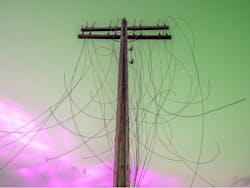Regulators ask Hawaiian Electric to Explain Lack of Non-Wires Alternatives in Plan
The Public Utilities Commission of Hawaii is pushing back against Hawaiian Electric Companies (HECO) proposed integrated grid plan (IGP) because it has not given sufficient consideration to non-wires alternatives.
HECO may be prematurely excluding non-wires alternatives and “significantly” delaying the proposed soft launch of its IGP, the commissioners told the utility in an Aug. 5 letter (Docket No. 2018-0165).
The commission takes issue with the utility’s plan to build a new substation to solve reliability problems at the Ho’opili housing development. HECO appears to be delaying consideration of non-wires alternatives for the site until 2025. That approach “may be inconsistent with prior commission guidance,” the commissioners wrote in the letter.
The commissioners referenced, in particular, controversy surrounding an earlier substation project, the $8.8 million Ka’aahi substation. HECO “may intend to again implement a traditional wires solution without a complete consideration of potential alternatives,” the commissioners wrote.
Evolution of grid plan
The utility has been working for two years on the IGP, a plan that came out of the commission’s displeasure with the utility’s previous power supply improvement plans. In the wake of the criticism, HECO adopted a new approach, one that takes distributed resources into greater consideration, as well as competitive solicitations to determine market prices and evaluate different classes of resources against each other. The plan also envisions a speedier process, 18 months for the IGP versus 30 months for the more traditional planning process.
Now the commission is concerned that HECO is reversing course.
The soft launch of the utility’s IGP was envisioned as “an opportunity to identify and test alternative sourcing methods for use during the IGP process,” the commissioners wrote. But, they said, HECO seems to have “concluded that a traditional solution is necessary without the opportunity for market providers to offer an alternative solution.”
In the letter, the commissioners told the utility they would like “to better understand the rationale for these decisions to determine if a course correction is necessary.”
The commissioners requested that the utility engage in further review and discussions on the timing and proposed scope of the soft launch RFP for the IGP.
S&C Electric VP on Non-Wires Alternatives: Faster, Better, Cheaper
Seeks solar power
In one of its planned RFPs, HECO is seeking technologies equivalent to 594 MW of solar power for Oahu; 135 MW for Maui, and 32 MW to 203 MW for Hawaii Island. All would begin service in 2022.
Those resources would replace the planned closure or a coal plant on Oahu and the retirement of Maui’s oldest oil-fired plant in the next five years.
Track news about non-wires alternatives. Subscribe to the free Microgrid Knowledge newsletter.
